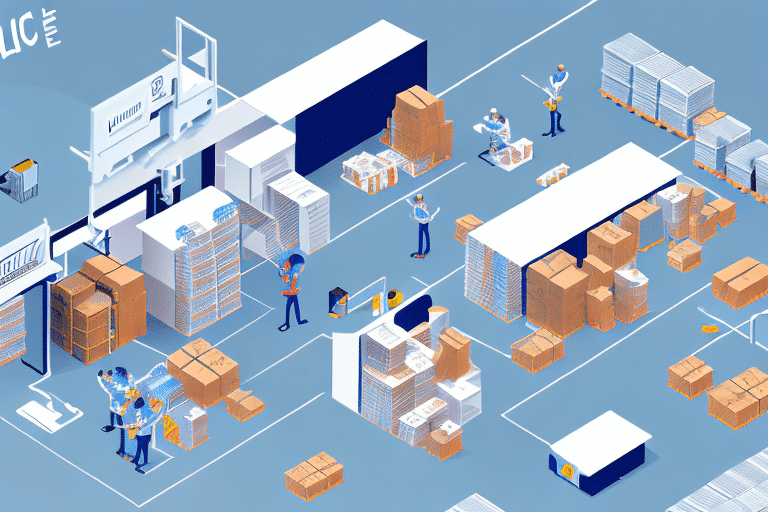Introduction to Micro Fulfillment Centers
Micro fulfillment centers are compact, strategically located warehouse facilities designed to optimize ultra-fast order fulfillment and local product delivery. As e-commerce continues to surge, these centers play a pivotal role in meeting the increasing demand for swift and reliable delivery services, thereby enhancing overall business operations and customer satisfaction.
Growth Drivers in the E-Commerce Industry
Rising Consumer Expectations for Fast Delivery
The e-commerce market has experienced exponential growth, with global online sales projected to reach $6.3 trillion by 2024 (Statista). Consumers now expect same-day or next-day delivery, pushing businesses to adopt micro fulfillment centers to meet these expectations efficiently.
Handling Smaller Orders and Increasing Sales
Traditional warehouses often struggle with the high volume of small orders typical in e-commerce. Micro fulfillment centers enable businesses to process smaller orders more frequently, leading to increased sales and improved customer loyalty.
Environmental Sustainability
By reducing the distance products travel, micro fulfillment centers help lower transportation emissions. According to a report by EPA, optimizing delivery routes can significantly contribute to lowering a company's carbon footprint, aligning with the growing consumer demand for sustainable practices.
Benefits for Businesses
Supply Chain Optimization
Micro fulfillment centers enhance supply chain efficiency by enabling real-time order processing and inventory management. This leads to reduced stock-outs and minimizes delays, ensuring a seamless supply chain that can swiftly adapt to changing demands.
Enhanced Customer Experience
Faster and more accurate order fulfillment results in timely deliveries, which boost customer satisfaction and loyalty. Studies have shown that 79% of consumers consider delivery speed a key factor in their purchasing decisions (PwC).
Scalability for Small Businesses
Micro fulfillment centers offer small businesses an affordable solution to scale operations without the need for significant investments in large warehouse spaces. This localized presence allows for efficient market expansion and a stronger competitive edge in the e-commerce landscape.
Cost Reduction in Shipping
Localizing inventory through micro fulfillment centers reduces shipping distances, leading to lower transportation costs. Additionally, the automation within these centers decreases labor expenses, providing businesses with cost-effective fulfillment solutions.
Technology and Automation
Automation and Robotics in Operations
Advanced technologies such as autonomous robots, conveyor belts, and automated picking systems are integral to micro fulfillment centers. These innovations enhance order accuracy and speed while reducing reliance on manual labor (Forbes).
Compact Storage Systems
High-density storage solutions, including vertical carousels and automated storage and retrieval systems (AS/RS), maximize space utilization. This allows micro fulfillment centers to operate effectively in urban areas where real estate is at a premium.
Real-Time Inventory Management
Implementing real-time inventory management systems ensures accurate tracking of stock levels, preventing overstocking or stock-outs. Such systems enable dynamic pricing and promotions based on current inventory and demand fluctuations.
Strategic Considerations for Implementation
Choosing the Right Location
Selecting an optimal location is crucial for the success of a micro fulfillment center. Factors to consider include proximity to major transportation hubs, availability of skilled labor, and existing infrastructure. Additionally, evaluating local regulations and market competition can inform better site selection.
Build vs. Outsource
Businesses must decide whether to construct their own micro fulfillment centers or outsource to third-party logistics providers. Building a facility offers greater control and customization but requires significant investment. Outsourcing can be cost-effective and quicker to implement but may limit customization and control over operations.
Addressing Implementation Challenges
Implementing a micro fulfillment center involves overcoming challenges such as high initial costs, securing suitable locations, and recruiting skilled personnel. Leveraging partnerships with technology providers and investing in employee training can mitigate these obstacles.
Case Studies and Real-World Examples
Leading e-commerce companies have successfully integrated micro fulfillment centers to enhance their operations:
- Walmart: Launched "local fulfillment centers" to expedite order processing and local deliveries (Walmart Local Fulfillment).
- Amazon: Utilizes "Amazon Robotics Fulfillment Centers" to streamline order fulfillment and improve efficiency (Amazon Robotics).
- Target: Implemented micro fulfillment centers to support same-day delivery services (Target Same-Day Delivery).
These examples demonstrate the tangible benefits of micro fulfillment centers in enhancing operational efficiency and customer satisfaction.
Future Trends and Predictions
The logistics industry is poised for significant growth in micro fulfillment centers. Experts anticipate a 30% increase in the adoption of these facilities by 2025 (McKinsey & Company). Technological advancements, such as artificial intelligence and machine learning, will further enhance the capabilities of micro fulfillment centers, making them more efficient and cost-effective. Additionally, the trend towards sustainable logistics solutions will drive the integration of eco-friendly practices within these centers, aligning with global sustainability goals.
Overall, micro fulfillment centers represent a transformative approach to modern logistics, offering scalable, efficient, and customer-centric solutions that are essential for thriving in the competitive e-commerce landscape.




















